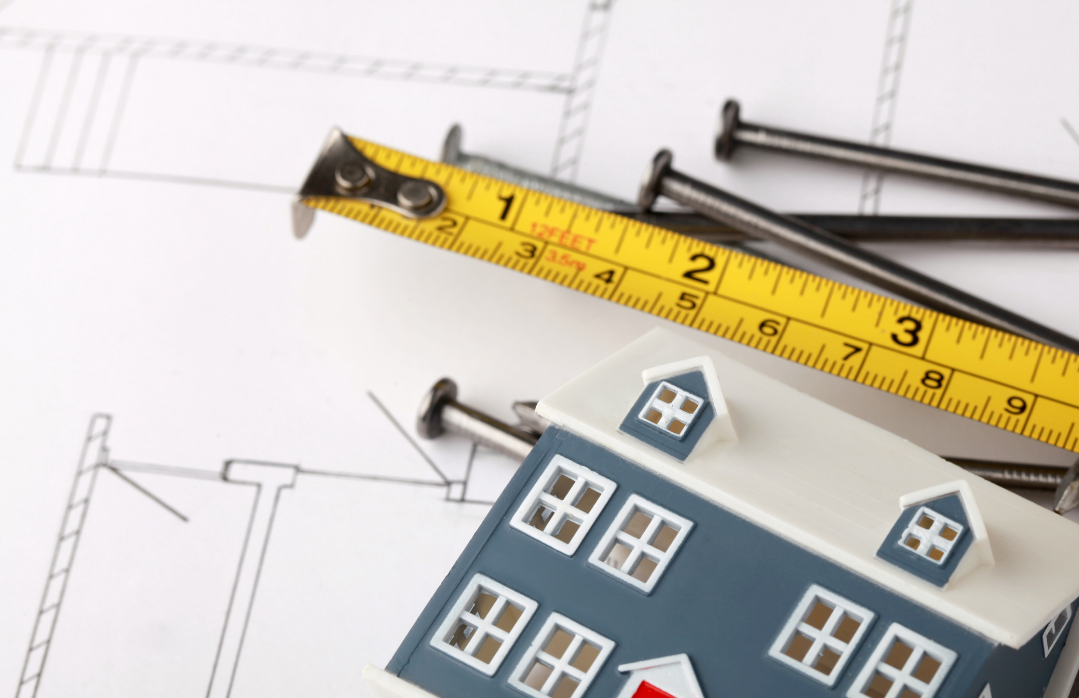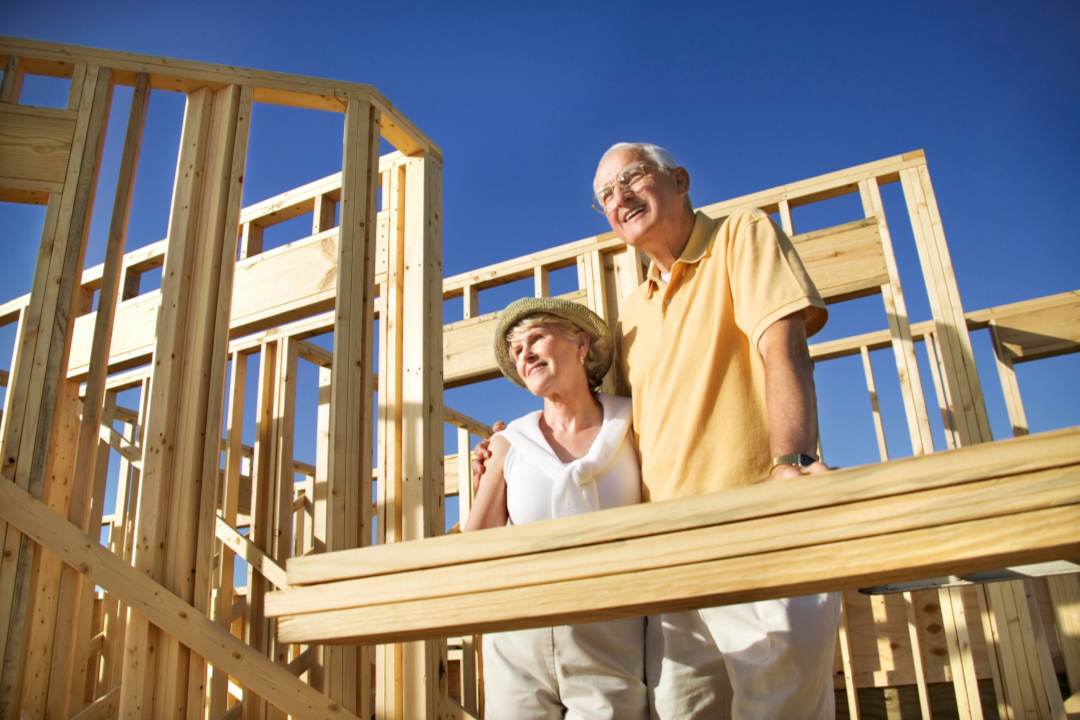- The cost of building a house in Canada
- Getting a loan for building a house
- Average time to build a house
- Ways of reducing costs when building a house
- Alternatives to custom-built homes
If you’ve wondered about the average cost to build a house in Canada, you’re not alone, with current market conditions from coast to coast characterized by a severe housing inventory shortage. Quite simply, it could be easier to purchase bare land or a tear-down home and build something brand new. But aside from stock, there are many other advantages to building your home from scratch. You have the opportunity to customize the space to fit your lifestyle. Room by room, you have the final say on the layout, features, and finishings. On top of all that, there is the thrill of watching the project come together.
Building a home comes with many benefits and some headaches, if we’re being perfectly honest. One challenge is the rising costs brought on by the COVID-19 pandemic. Supply chain delays, the increasing cost of materials, and labour shortages have impacted the cost of building. The average price to build a single-family home in Canada ranges from $100 to $275 per square foot, depending on where you live.
What is the cost to build a house in major Canadian cities?
When it comes to the average cost to build a home in Canada, according to Altus Group’s 2022 Canadian Cost Guide, the price per square foot for a detached home in major Canadian cities is as follows:
- Vancouver: $150 – $275
- Calgary: $125 – $200
- Edmonton: $125 – $200
- Winnipeg: $120 – $190
- Greater Toronto Area: $165 – $260
- Ottawa: $125 – $205
- Montreal: $130 – $190
- Halifax: $100 – $155
- St. John’s: $120 – $155

Can I get a Loan to Build a House?
There are Home Construction and Self-Build Mortgages available when building a house. However, your first consideration is buying a piece of land. Vacant land is an unsecured asset, so your loan typically comes with higher interest rates than a traditional mortgage. Additionally, you’re generally expected to have a larger down payment, ranging between 25–30%.
These vary in interest rates and terms from lender to lender.
There are two types of construction mortgages:
- Completion mortgage: In this case, the loan isn’t transferred until construction is complete.
- Draw or a progress-draw mortgage: The builder draws money in increments as the home is built.
These loans are more complicated than a typical mortgage. Speak to a mortgage broker or your bank to discuss your options to make the right financial decision based on your needs.
How Long Does It Take to Build a House?
Time is tricky to call as there are so many working parts. Add in the decreased predictability that the pandemic brought, complicating matters further. However, on average, it takes from 10 to 16 months to build a house, assuming everything goes as planned. That doesn’t include clearing the land or tearing down an existing home. It also does not consider the many issues that can arise from bad weather to lack of human resources and delays in materials to challenges with you being able to make decisions promptly.
How to Reduce the Cost of Building a House?
The best thing about building a house is that you can control the budget to save on overall costs – or at least try. Here are some pro tips on how you can save money:
Land and Location
Where you build is an essential consideration in the home building process. If you are able, the further you purchase from a major city, typically you will find a lower price tag. Also, consider the slope of the land and the number of trees you have to clear. Grading and tree clearance are added costs you could save by choosing suitable land.
Take Bids
Consider several contractors to bid on the project. Keep in mind that the cheapest builder is not always the best. There’s often a reason that a contractor is coming in low, and it could be that they sacrifice deadlines or cut corners on quality. Do your research and make sure you approach contractors with experience in your region and outstanding reviews and ratings. Ensure that you get comprehensive quotes, including fencing, driveways, landscaping, and other exterior elements.

Choose Existing Home Designs
It is far more affordable to get a preexisting design over a completely custom design. Consider going with pre-designed choices from a library of plans offered by an experienced home builder.
Define Your Budget
Set a realistic budget by considering what you need in your home and what you can afford. Give yourself some wiggle room so that you don’t strain your financial situation. Once you get estimates, you can then see if there’s a possibility of an upgrade in square footage, the number of bathrooms, etc.
Consider Lifestyle
Your lifestyle will play a role in what you need from your home. Are you planning on having a family? Do you often have out-of-town guests? Do you work from home? Do you work out at home? Do you love cooking? How many cars do you have? How much storage space do you need to accommodate your hobbies? These questions help you determine where you need to invest extra money and where you can save.

Save on Aesthetics
The style of home you choose will impact the cost significantly. If you’re not married to a particular style, consider going industrial or rustic, as these looks are more forgiving. You can get away with lower costs on the interior finishes without sacrificing the look of your home. For example, drywall is far more affordable than pine or cedar panelling, though you sacrifice some aesthetic value.
Lend a Hand
Significant savings on labour costs can be found by doing some of the work yourself. Some of the easiest things to take on are painting and installing light fixtures. Handier people will often install their flooring or kitchen cabinets once all the plumbing and drywall are complete.
Get Quotes
Though it takes a little more time, get quotes from multiple trades on each aspect of the home. There are some areas where you might get better deals than your contractor can give. Those can include HVAC systems and water heaters, so don’t be afraid to tell your contractor you want to shop around.
Reclaim and Recycle
There’s a lot to be said for reclaimed and recycled items. They are eco-friendly, add character and can also save a lot of money. There are many salvage yards and shops and charitable organizations like Habitat for Humanity Restore, where you can hunt for everything from doors and windows to kitchen cabinets and sinks.
Are There Other Options to Custom-Built Homes?
If you are looking for a new home but don’t have the time, energy, or money to invest in a new home build, there’s always the new-build route in a subdivision. You get a new house without having to organize contractors and tradespeople. If there are features that you want in the home, there is typically an option to upgrade for a more customized look or features.
Although building a home can prove affordable, it also comes with its fair share of challenges. Be sure to plan ahead and educate yourself on the building process.
Courtesy: remax.ca


I loved reading everything laid down in this particular blog. Of all the blogs that I have read in more recent times, this one takes the cake. I liked it all in all.
Posted by Greg Werks on Monday, April 17th, 2023 at 7:39amLeave A Comment